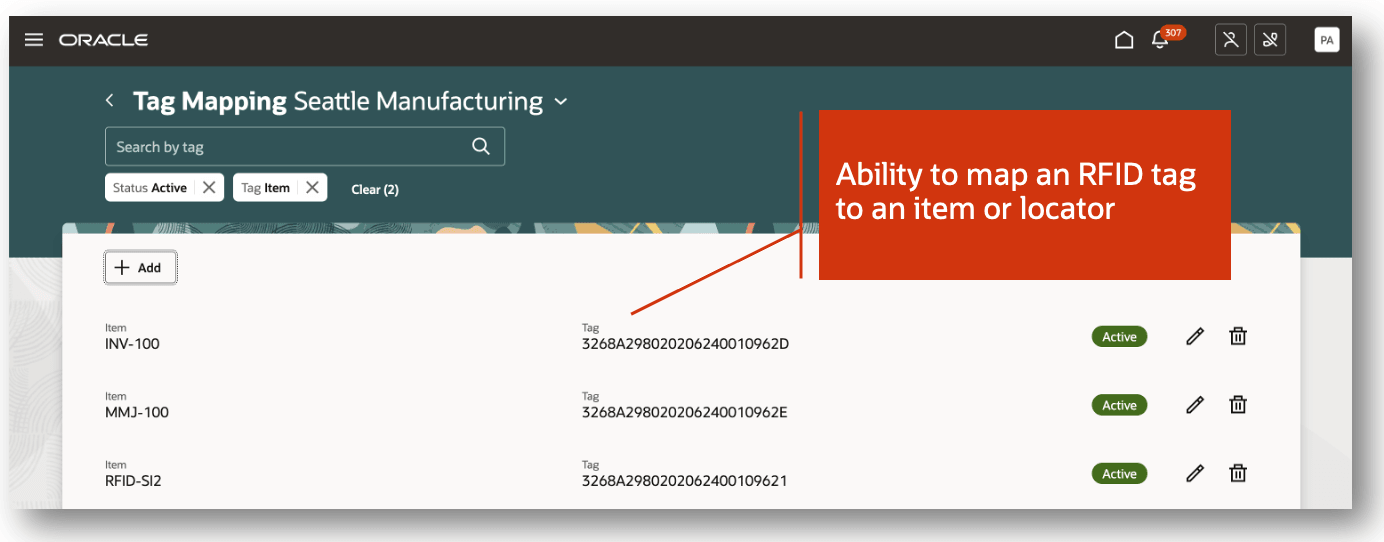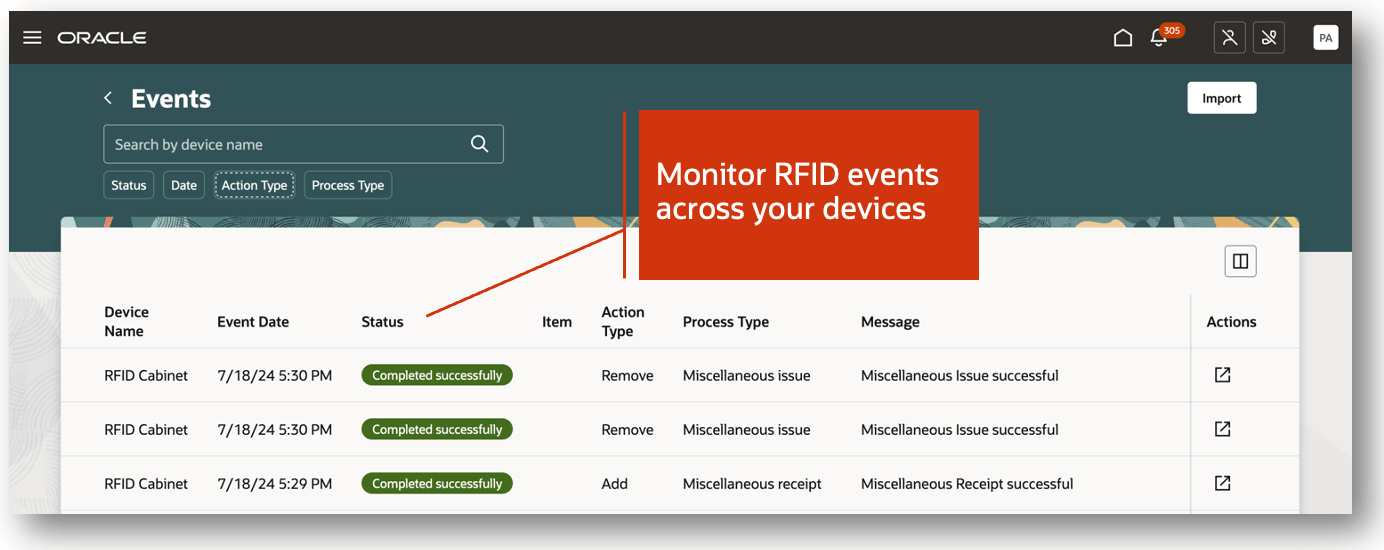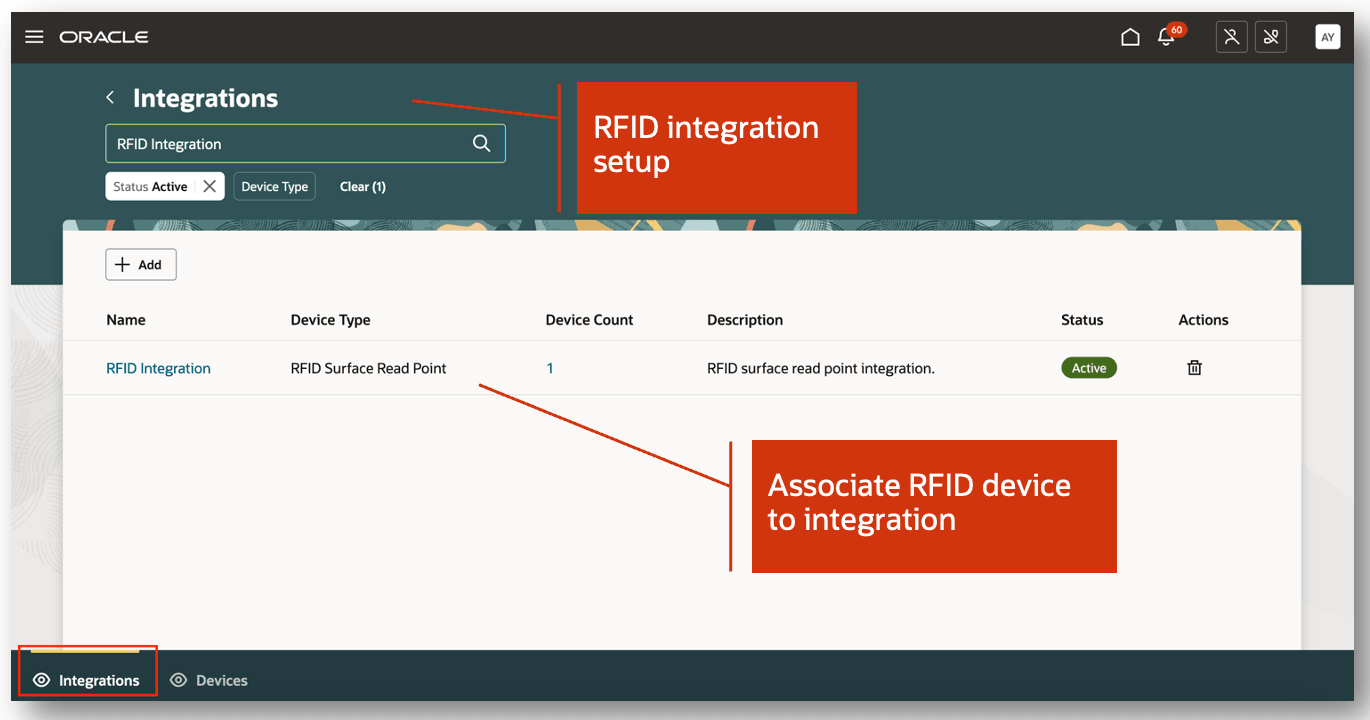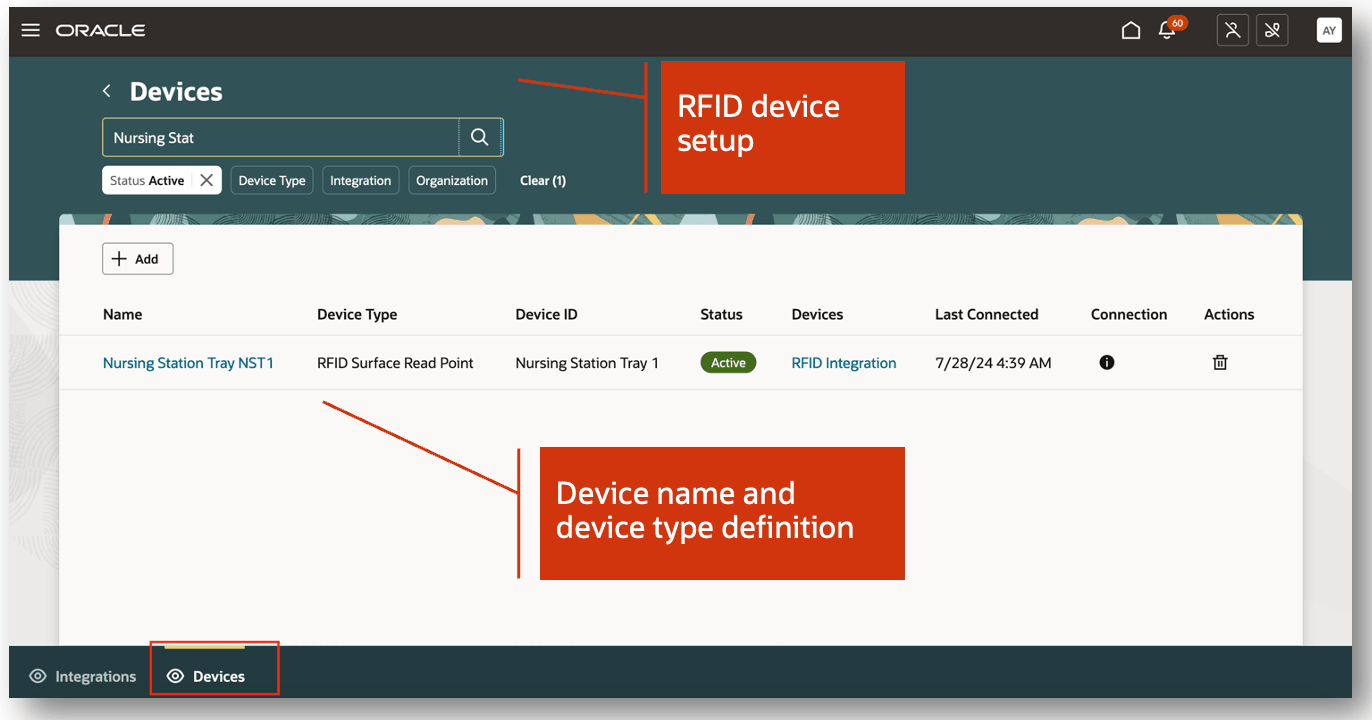Replenish Locations Using Radio Frequency Identification
Radio frequency identification (RFID) is a wireless technology that uses radio waves to identify and track objects affixed with an electronic tag by transmitting signals based on specific events. These events are then interpreted to perform explicit actions based on that information with little or no physical intervention outside of the normal business processes employees perform in their daily duties. This allows you to automate things like product issues, product movements, and initiating replenishments. Prior to this update, users have to manually submit a PAR count in order to initiate the replenishment of a PAR location. Now you can use RFID technology to automate the creation of replenishment orders for PAR locations that use the two-bin replenishment count method or order PAR replenishment count type. Similarly, in order to issue perpetually tracked high-value items that are typically stored in cabinets, users had to perform a manual transaction. Now, you can use RFID technology to automatically create issue transactions for goods that are stored in an RFID-enabled cabinet and affixed with an RFID tag.
The Tag Mapping page allows you to map RFID tags to an object such as an item or locator. For example, in the case of high-value items, you can map RFID tags to an item and optionally a lot and serial number. This allows you to track and replenish high-value items within your facilities. You can also map an RFID tag to a location such a subinventory and locator. This is primarily used for replenishment of supplies stored in RFID-tagged storage bins. The Tag Mapping page is also used to deactivate or remove the tag mapping when an item moves out of tracking, primarily in scenarios where the RFID tag is reused for tracking another item.

Tag Mapping Desktop Page
The Tag Mapping page is also provided in a mobile version allowing you to map RFID tags while performing mobile receiving and put away transactions. For example, when performing a put away transaction, you can map an RFID tag to an item or locator when performing put away.

Tag Mapping Mobile Page
You can monitor RFID events across your devices. Events represent activities performed on a specific RFID device. For example, the miscellaneous issue process type can be captured for an RFID-enabled cabinet. You can quickly review the status of an event by navigating to the Monitor RFID Events task. You can further refine the listing of events by filtering on Status, Date, Action Type, and Process Type. Additionally, you can select an event and view additional details associated with the event. For the miscellaneous issue process type, you can click the Actions icon to navigate to the completed inventory transactions page. For a replenishment request, you can click the Actions icon to navigate to the PAR counts overview page. The Process Inventory RFID Events scheduled process can be scheduled to run periodically to detect any events created on a specific RFID device.

Monitor RFID Events
This feature provides you the ability to initiate the replenishment of a two-bin PAR location and issue high-value goods from cabinets in real time without users performing manual transactions which saves you time and reduces errors.
Steps to Enable
Follow these steps to enable or disable this feature:
- In the Setup and Maintenance work area, search for and select the Manage Inventory Profile Options task.
- On the Manage Inventory Profile Options page, search for and select the ORA_INV_RFID_REDWOOD_ENABLED profile option code.
- In the Profile Values section, set the Site level to Yes or No. The default value is No.
- Yes = enables the feature
- No = disables the feature
- Click Save and Close. Changes in the profile value will affect users the next time they sign in.
Follow these steps to configure RFID integrations and devices:
- In the Setup and Maintenance work area, go to the Configure RFID Integrations and Devices task:
- Offering: Manufacturing and Supply Chain Materials Management
- Functional Area: Inventory Management
- Task: Configure RFID Integrations and Devices
- On the Integrations page, click the Add button to create a new integration.
- Click Submit.
- Click the Devices tab to open the Devices page.
- On the Devices page, click the Add button to create a new device.
- Click Submit.
In order to use the Replenish Locations Using Radio Frequency Identification feature, you must define an integration which allows RFID events to be captured that occurs on the physical device. Integrations include defining the integration name, device type, and connection details. Once you've completed configuring the integration, you can set up your RFID devices.

RFID Integrations
RFID device configuration must be completed to use the device. RFID device configuration includes defining the device name, device identifier, and device type. A device is assigned to an inventory organization, subinventory, and locator.
The Locator field on the Devices page is optional. Each device is mapped to an inventory location, which can be a specific subinventory or a locator within that subinventory. This mapping determines the inventory location where transactions occur when an RFID-tagged item is added or removed.
For example, in the case of PAR counting, when a device is mapped to a subinventory only, this indicates that the item needs to be replenished in the associated subinventory. When a device is mapped to a subinventory and locator, and a tag is added to the surface reader, this indicates that the item needs to be replenished in both the associated subinventory and locator. If RFID tags are associated with bins (locators), the device setup should specify only the subinventory, and tag mapping will map to a locator.
In the case of miscellaneous transactions, when the device is mapped to a subinventory and an RFID tag is added or removed, the associated subinventory is treated as the location where the item is moved into or out of. When the device is mapped to a subinventory and locator, and an RFID tag is added or removed, the associated subinventory and locator are treated as the location where the item is moved into or out of.

RFID Devices
Tips And Considerations
- An RFID device can only be associated with a single subinventory and locator.
- An RFID device can be moved from one subinventory and locator to another subinventory and locator.
Key Resources
- Oracle Fusion Cloud SCM: Using Inventory Management guide, available on the Oracle Help Center.
- Oracle Fusion Cloud SCM: Implementing Manufacturing and Supply Chain Materials Management, available on the Oracle Help Center.
Access Requirements
Users who are assigned a configured job role that contains these duty roles can access this feature:
- Map RFID Tags Using Responsive Inventory Duty (ORA_INV_MAP_RFID_TAGS_PWA_DUTY)
- Monitor RFID Events Using Responsive Inventory Duty (ORA_INV_MONITOR_RFID_EVENTS_PWA_DUTY)
- Process Inventory RFID Events Duty (ORA_INV_PROCESS_INVENTORY_RFID_EVENTS_DUTY)
These duty roles are new in this update.
To set up this feature, you'll need a configured job role that contains this duty role:
- Configure RFID Integrations and Devices Using Responsive Inventory Duty (ORA_INV_CONFIGURE_RFID_INTEGRATIONS_DEVICES_PWA_DUTY)
This duty role is new in this update.